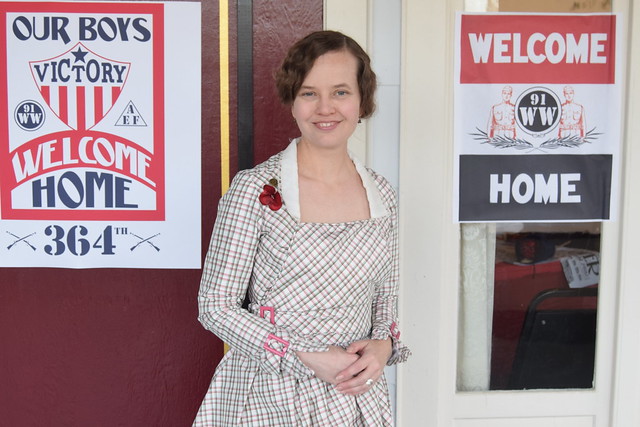
When my friend Lauren of Wearing History announced she was hosting the Great War Gallop to commemorate the 100 year anniversary of the end of World War I, I immediately wanted to go, and wanted a new dress. After a little searching, I found this plaid dress from Antique dress. I found the perfect pink and green small scale plaid from Pure Silks, and, less than a week before the dance, made the dress.
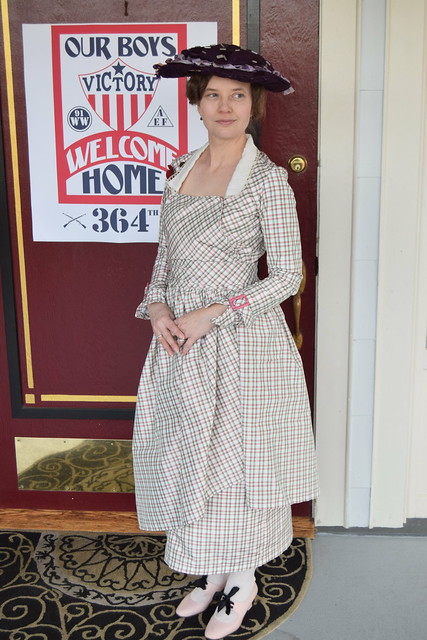
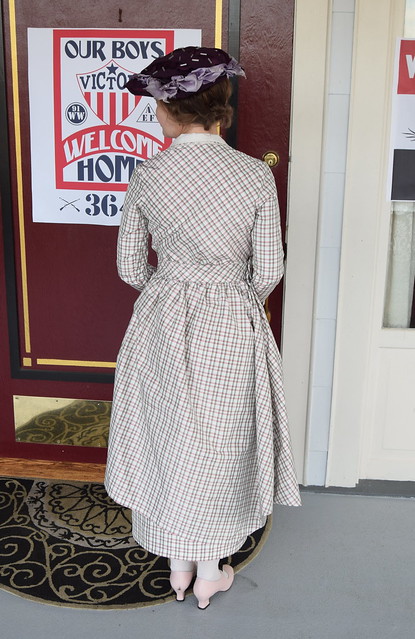
The pattern for my bodice is an altered version of the Wearing History Elsie blouse pattern. The underskirt is the underskirt part of the Past Patterns 1913-1915 skirt pattern and I drafted the overskirt myself. There are pictures of the pattern alterations at the bottom of the post.
The dress is mostly machine sewn. Besides basting the collar in and the lace on the collar, only the piped center panel and cuffs, tacking the center panel down, and closures are done by hand.

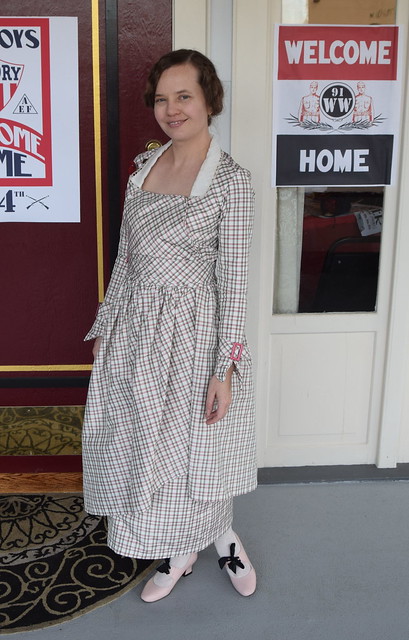
I'm wearing the dress over the 1918 Austerity corset from Corsets by Jill Salen, petticoat from the Folkwear Edwardian Underthings pattern, and a chemise and corset cover that I drafted myself based on period examples. Even though the skirt is very narrow, I find it sits best with a full petticoat beneath it. My hat is antique, I bought it on eBay ages ago, and the shoes are custom dance shoes from a store that's since gone out of business.
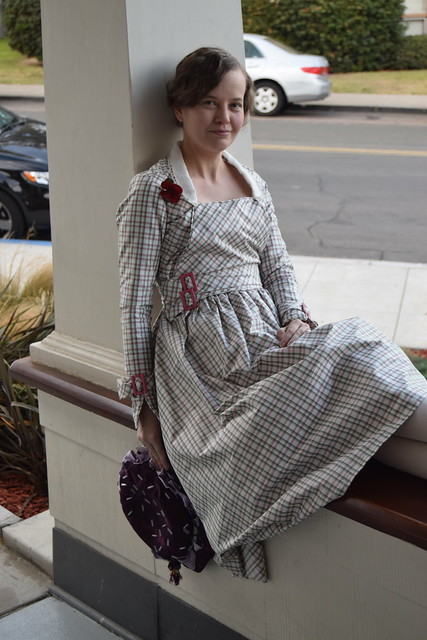

I thought that the buckles on the original dress would be easy to find, but they weren't. I found some black buckles on eBay and spray painted them pink. I'm wearing a poppy and my original Votes for Women button as well. The collar is a straight piece of Swiss muslin from Farmhouse Fabrics and trimmed with vintage lace.
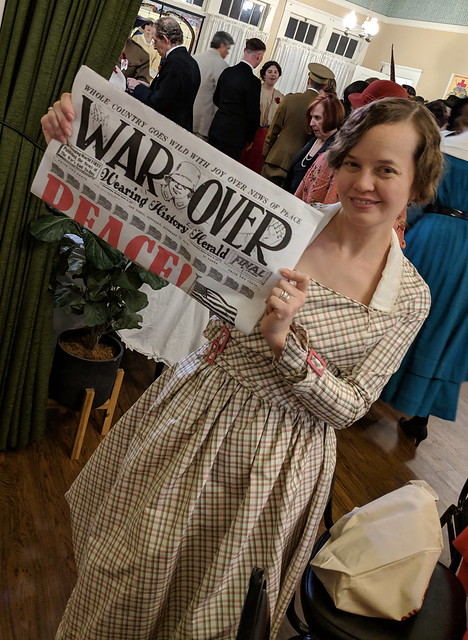
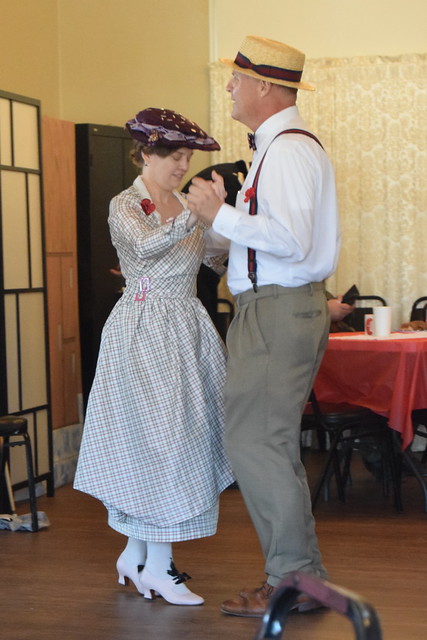
The hall where the dance was held was built in 1911 and hosted dances for soldiers during WWI. The newspapers were a perfect touch! And it's a good thing still photos don't show that you don't actually know how to dance.
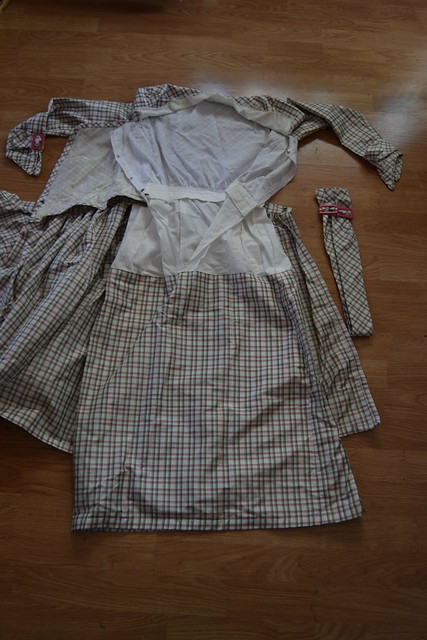


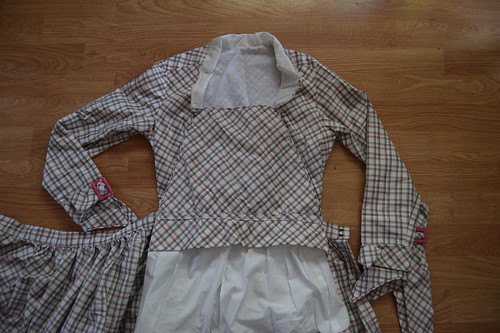

Then the center front panel, which is sewn at the top right side for an inch or so and the waist, fastens at the left side with hooks and bars. There are two hooks and bars at the waist because I misplaced the first one and it needed to be moved. It was easier to do a second one and leave the first just in case it was right.
After the front panel is closed, the overskirt, which is on a separate waistband and sewn to the inner waistband, fastens. I thought about attaching the panel to the waistband, but decided that it would be easier to fasten them separately.
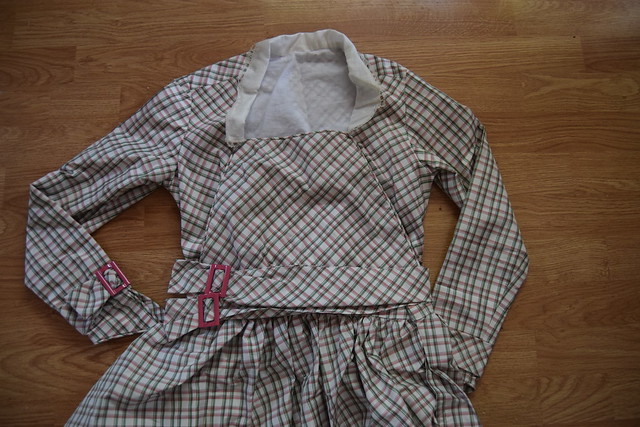


The pattern alterations were really quite straightforward. Fortunately the pictures of the original dress included one of the dress open so it was easy to figure out what was happening. I just changed the neckline to a square, and folded a piece of fabric into a trapezoid to create the front panel. I did accidentally make the square neckline a bit high, but that was easy to fix without doing anything--I just unsnapped the first snap and tucked it down a bit.
I also trimmed the length a bit, not shown here, because it's a blouse meant to be tucked in. I did that on the actual dress, but not the pattern.
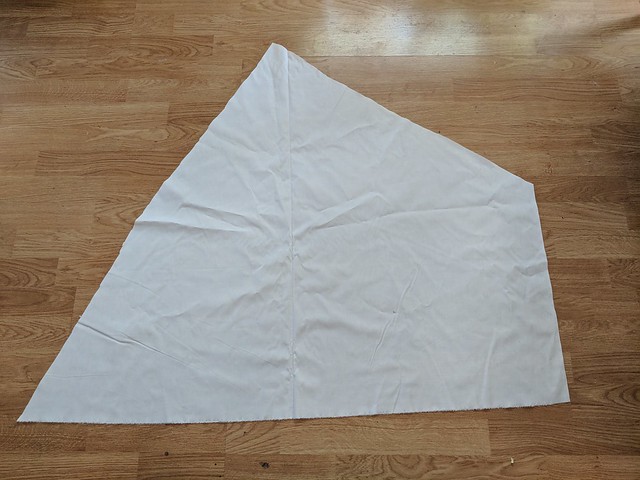
This is the front panel of the skirt. The back panel is nearly identical--the short side is just a little bit longer. The bias side seam was sewn, the skirt was hemmed, then machine gathered and sewn to the waistband. The shorter, straight of grain side was left open. Then to tuck the skirt up, I sewed a snap on the inside seam and a matching snap at the hem. Much easier for ironing than tacking it into place.
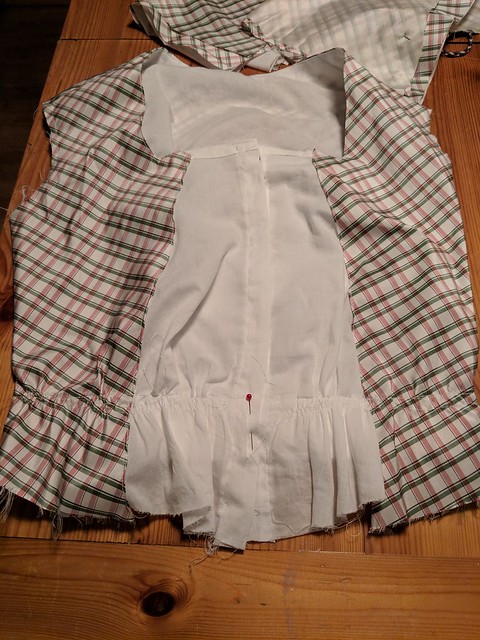

I don't have many construction pictures--that's what happens when you start a dress on Sunday for the following Saturday. On the left you can see the bodice sewn to the internal waistband before I trimmed the excess. On the right is the almost finished dress without the overskirt.

Thanks for showing the dress all opened up, it really helps understand the fastening.
ReplyDeleteYou're welcome! These dresses really are puzzles :)
DeleteDitto re thanks for all the help with the details - this is just a fabulous dress!
ReplyDeleteThis dress is so cute, and looks so good on you! I love that complicated construction. And that overskirt! <3
ReplyDeleteDress is amazing and you look lovely in it. :) I love the shoes. :)
ReplyDeleteThis silk dress is so cute and Looks classic. Your post is we'll detailed. Thank you.
ReplyDeleteI love this plaid silk dress .Cheers for more.
ReplyDeleteThis was a really great post! This post was exactly what I was looking for. Thanks!!
ReplyDeleteGreat post. I was once checking constantly this weblog and I'm impressed! Extremely useful information specially the closing part. I maintain such information much. I was once seeking this specific information for a very long time. Many thanks and best of luck.
ReplyDeleteSympli Travel Wear
Very informative and useful historical post. I see you have a lot of other cool stuff available at your website, simply bookmarking it to check in spare time. Thanks and keep the good work up.
ReplyDeleteSympli dresses